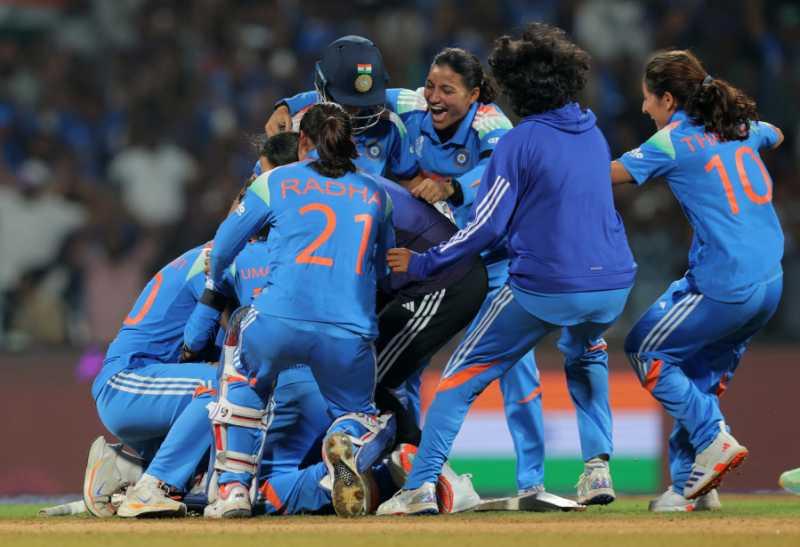- Advertisement -
With the highly anticipated Women’s ODI World Cup semifinal between India and Australia on the horizon, weather concerns have sparked widespread speculation about the match’s fate should rain intervene. Cricket fans and experts alike are keen to understand the implications if the game is washed out. This article outlines what procedures come into play in such a scenario, including the role of the reserve day, to clarify how the tournament ensures a fair contest even in the face of adverse weather conditions.
What are the Rules if the India Australia Semifinal is Abandoned Due to Weather
In the event that the highly anticipated India vs Australia semifinal in the Women’s ODI World Cup faces weather disruptions, specific protocols come into play to ensure a fair outcome. The International Cricket Council (ICC) has stipulated a reserve day for knockout matches, including the semifinal. If the match is abandoned or cannot be completed due to rain or unfavorable conditions on the original day, all efforts will shift to this reserve day where a full match or the remaining overs will be played. This measure guarantees that both teams have an equal opportunity to compete under equitable conditions despite adverse weather.
Should the reserve day also be affected by weather and the match still cannot reach a conclusive result, the tournament rules outline predetermined criteria to determine the finalist. These include:
- Higher position in the group stage points table
- Better net run rate if points are tied
- Head-to-head records as a last resort
These rules ensure clarity and uphold the competitive spirit of the tournament, balancing fairness with practicality in the face of weather uncertainties.
| Scenario | Action |
|---|---|
| Match abandoned on original day | Play resumes on reserve day |
| Match abandoned on reserve day | Finalist chosen by group stage ranking |
| Points tie | Net run rate considered |
How the Reserve Day Works in the Women’s ODI World Cup and What Fans Should Expect
In the event that the India vs Australia semifinal is affected by adverse weather conditions, the tournament’s reserve day protocol comes into effect. This means that if no result is possible on the scheduled match day due to rain or bad light, the game can continue or be replayed on the designated reserve day immediately following the original fixture. However, the reserve day isn’t a full fresh start; rather, it picks up exactly where the previous day’s play left off, preserving the match situation to ensure fairness and continuity. Fans should anticipate a possible extension of the thrilling semifinal action into the next day, rather than outright abandonment or cancellation.
The Women’s ODI World Cup rules clearly define the approach to weather disruptions with the help of the following key points:
- Match Resumption: Play resumes from the exact over, ball, and score position where it was halted.
- Minimum Overs Requirement: A specified minimum number of overs per side must be completed for the match to be considered official.
- Weather Windows: Adequate breaks and flexible start times are allowed on the reserve day to maximize playtime.
| Scenario | What Happens? |
|---|---|
| Full match abandoned on original day | Match starts fresh on reserve day |
| Partial overs played | Match continues from where paused |
| Insufficient overs on reserve day | Match declared no result |
For fans tuning in, this means excitement and patience go hand-in-hand. Supporters should be ready for extended coverage and stay updated on weather forecasts, as the reserve day ensures the knockout stage maintains its competitive integrity while providing players a fair opportunity to contest for a spot in the final.
Expert Recommendations for Teams and Organizers Amid Weather Disruptions in Key Matches
To mitigate the impact of sudden weather disruptions during crucial fixtures like the India vs Australia semifinal, teams and organizers must prioritize clear communication and flexible planning. Experts emphasize the importance of keeping squads mentally prepared for delays and interruptions, ensuring players remain warm-up ready and focused despite uncertainty. Additionally, having contingency strategies aligned with tournament rules-such as immediate availability of reserve players or tactical shifts-can greatly influence outcomes during unpredictable scenarios.
Key recommendations include:
- Active liaison between ground staff, officials, and team management for real-time updates on weather forecasts.
- Structured warm-up routines adapted to intermittent play conditions to maintain player readiness.
- Comprehensive briefings on reserve day protocols to align team tactics and resource allocation.
- Mental conditioning support to help players cope with the psychological toll of extended wait times or rescheduling.
| Role | Primary Responsibility | Proactive Action |
|---|---|---|
| Match Officials | Weather assessment and match status updates | Consult meteorologists and communicate promptly |
| Team Coaches | Player readiness and tactical adjustments | Hold continuous team briefings during breaks |
| Ground Staff | Pitch and field maintenance | Execute rapid ground recoveries post-rain |
| Players | Maintain physical and mental readiness | Follow dynamic warm-up and cooldown routines |
Future Outlook
As the much-anticipated Women’s ODI World Cup semifinal between India and Australia approaches, weather remains an unpredictable factor that could influence the outcome. Should rain intervene and the match be washed out, the tournament’s reserve day provisions will be activated to ensure a result is achieved, underscoring the ICC’s commitment to fair play and competitive integrity. Fans and players alike will be watching closely, hopeful for clear skies and an exciting contest, but prepared for the possibility that the reserve day may prove decisive in determining who advances to the final.
- Advertisement -


